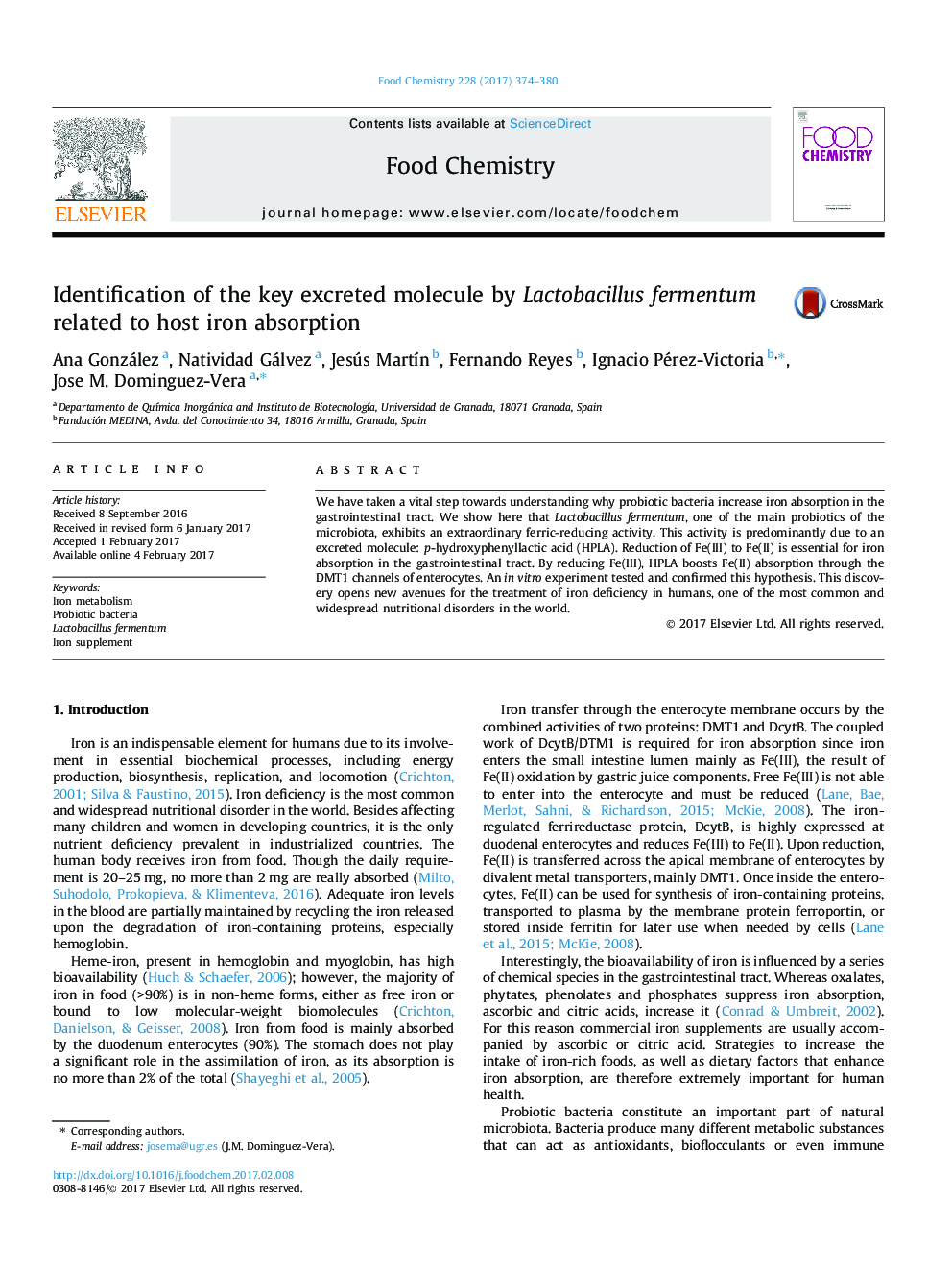| Article ID | Journal | Published Year | Pages | File Type |
|---|---|---|---|---|
| 5133852 | Food Chemistry | 2017 | 7 Pages |
â¢Iron deficiency is one of the most common nutritional disorders in the world.â¢The chemical mechanisms why probiotic bacteria help to iron absorption are unknown.â¢We demonstrate how and why probiotic bacteria increase iron absorption.â¢This discovery opens new avenues for the treatment of human iron deficiency.
We have taken a vital step towards understanding why probiotic bacteria increase iron absorption in the gastrointestinal tract. We show here that Lactobacillus fermentum, one of the main probiotics of the microbiota, exhibits an extraordinary ferric-reducing activity. This activity is predominantly due to an excreted molecule: p-hydroxyphenyllactic acid (HPLA). Reduction of Fe(III) to Fe(II) is essential for iron absorption in the gastrointestinal tract. By reducing Fe(III), HPLA boosts Fe(II) absorption through the DMT1 channels of enterocytes. An in vitro experiment tested and confirmed this hypothesis. This discovery opens new avenues for the treatment of iron deficiency in humans, one of the most common and widespread nutritional disorders in the world.
Graphical abstractProbiotic bacteria increase iron absorption in humans due to their ferric-reducing activity. One of these bacteria, Lactobacillus fermentum excretes HPLA, which reduces Fe(III) to Fe(II). This Fe(II) is subsequently internalized into enterocytes by DMT1.Download high-res image (95KB)Download full-size image
